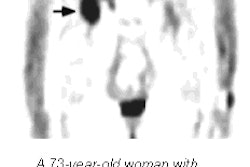Screening mammography for the early detection of breast cancer is one of radiology’s most important public health triumphs. Unfortunately, mammography is also one of a growing number of radiological procedures caught in the current funding crunch.
There is hope in new technologies that are beginning to make their way into clinicians' hands. In particular, full-field digital mammography (FFDM) promises a way out of the financial impasse by enabling higher throughput in mammography clinics. However, a number of issues must be resolved before FFDM can achieve the market penetration needed to have a major impact on the mammography industry.
An essential service threatened
Most imaging facilities in the U.S. provide screening mammography at a net loss. Since the Mammography Quality Standards Act (MQSA) went into effect in 1992, the U.S. Congress has set the payment rate for screening mammograms reimbursed through Medicare. The global rate for analog screening mammography is currently $69.23, and the rate for digital screening mammography is approximately $103.85. Reimbursements paid by most private insurers are considerably lower.
Given the expense of equipment and the number of regulations and quality assurance measures mammographers must follow, and the level of training required to create and interpret mammograms, most facility administrators believe that reimbursements for screening exams are grossly inadequate. Faced with the prospect of pouring scarce resources into a money-losing operation, a growing number of facilities have opted to close down or reduce services. In recent years, dozens of U.S. mammography facilities have ceased operations, while many more have scaled back services by reducing staff, uninstalling one or more mammography systems, and curtailing patient recruitment efforts.
Radiology facilities continually monitor the financial viability of their mammography services, and, under increased pressure, additional facilities may be forced to curtail or discontinue their mammography services. Having become aware of this crisis, many women’s organizations, professional associations, and other advocacy groups are questioning the U.S. government’s and service providers’ commitment to universal availability of breast screening.
The situation is also generating concern among companies that manufacture mammography systems, not least of all because they have invested tens of millions of dollars to develop their latest technology: full-field digital mammography. If the market for mammography equipment were to take a plunge, these companies would be left holding the bag.
Common sense alone would seem to dictate that a service in decline will not generate many equipment purchases. As highlighted in Frost & Sullivan’s report, "World X-Ray Mammography Market," facility closings and service reductions clearly have the potential to reduce the customer base and drastically curb equipment sales. For manufacturers, service providers, and most important, women, this factor could translate into unavailability in many areas, longer backlogs for available machines, higher out-of-pocket costs for patients, overworked staff, and general dissatisfaction for everyone involved.
Full-field digital mammography
To improve the financial picture, digital mammography users will rely on the technology's higher throughput and quicker turnaround time, rather than elusive increases in per-procedure reimbursement.
Even if reimbursement does rise modestly as expected, the increases will probably not be sufficient to allow most mammography facilities to survive, given current realities. Too many facilities run at suboptimal throughput and efficiency levels. Many industry experts assert that the only lasting solution for mammography facilities is to increase procedure volumes dramatically with faster throughput, while simultaneously maintaining high quality and patient satisfaction. The idea is to offset low reimbursement through high volume.
Low reimbursement and healthcare facility consolidation will also continue to encourage efficiency and higher performance capacity for screening facilities. FFDM promises to increase the number of screening exams that one machine is capable of performing during an eight-hour workday. Because the wait for film developing is eliminated -- and in most cases re-takes are not required -- FFDM may accomplish this goal.
In addition, Frost & Sullivan expects FFDM's higher contrast resolution and other technological advances to substantially reduce false positives and spurious biopsies, which should represent added value to service providers by saving money that would have been spent on unnecessary biopsies.
Reinvigorating vendors
As the last major branch of x-ray imaging to begin its inevitable migration to direct digital image acquisition, full-field digital mammography represents a crucial and long-awaited step toward the future of screening mammography. This technology may well provide the shot-in-the-arm that mammography manufacturers need in order to ensure long-term growth.
Installments of the new systems have gotten off to a slow start, but are steadily increasing. According to Frost & Sullivan research, the worldwide installed base of FFDM units is estimated at over 160, and has the potential to exceed 2,000 units by 2007. The Frost & Sullivan report also reveals that, in the year 2000, full-field digital mammography garnered an estimated 12% of global mammography equipment revenues.
Although GE Medical Systems' Senographe 2000D is currently the only FDA-approved FFDM product on the market, several other manufacturers are poised to enter the fray over the next few years. These include Fischer Imaging and Hologic, which both have products under FDA review, as well as Instrumentarium Imaging, Siemens Medical Solutions, Eastman Kodak, and Sectra Medical, with products in various stages of development.
The need for increased efficiency and throughput will be pivotal in promoting the growth of FFDM. Clever marketers will stress its higher productivity compared with that of conventional systems. Although many facility administrators balk at the current list price of nearly $500,000, future availability of competing FFDM products should lower prices substantially.
Additional challenges and future outlook
Although the future of FFDM looks bright, there are still many structural and technological problems to overcome. Longer-than-expected delays in the FDA approval process could threaten market availability of less expensive full-field digital mammography products at a time when their presence in the clinical setting is sorely needed.
The slow adoption of PACS networks, which are required to get the most efficient use out of digital mammography, could also affect the adoption rate and the ability to operate FFDM profitably. Suboptimal solutions for display and radiological analysis of digital images, and the high list price of FFDM systems, are also expected to temper growth during coming months.
Frost & Sullivan expects many of these issues to be conquered eventually, although this will happen in a gradual fashion. Similarly, the growth in manufacturers’ revenues is expected to be gradual rather than exponential. However, once the bulk of the structural and technological issues are resolved, FFDM sales are expected to grow dramatically. The compound annual growth rate for FFDM revenues was calculated at roughly 35% through 2007, although the bulk of this growth is not expected to occur until after 2005, with annual growth rates being considerably lower during the next four years.
From a competitive viewpoint, low unit sales at higher list prices will place increasing pressure on manufacturers to come up with aggressive marketing strategies, lower pricing, and attractive financing plans in order to secure a piece of the FFDM action. As the practice of mammography moves toward the digital domain, the competition will only become more intense, since it is expected that a single FFDM system will be able to do the work of two or more analog machines, thus reducing unit sales even further.
In this climate, manufacturers will have to find innovative ways of attracting and keeping customers -- or risk losing their market share to companies with more effective strategies.
By Antonio GarcìaAuntMinnie.com contributing writer
September 25, 2001
Antonio García is a medical imaging industry analyst at Frost & Sullivan, a San Jose, CA-based market consulting and training firm. The data and analysis in this article are included in a recently published Frost & Sullivan report on the world x-ray mammography market. For more information, visit healthcare.frost.com
Related Reading
Kodak reveals details on full-field digital mammography system, August 1, 2001
Hologic files PMA for Lorad digital mammography system, May 4, 2001
Speedier exam time gives digital mammography an edge over analog, May 4, 2001
Full-field digital mammography offers higher sensitivity, lower doses, March 28, 2001
Film-screen mammography remains gold standard, IOM says, March 8, 2001
Copyright © 2001 AuntMinnie.com



















